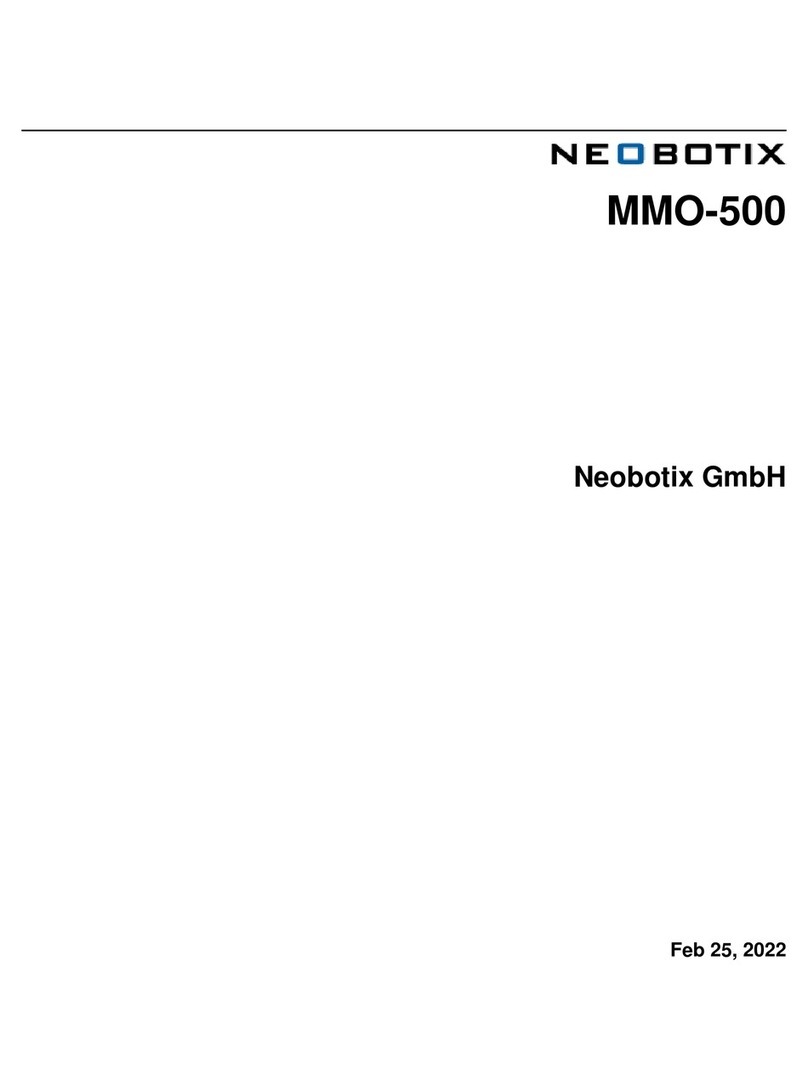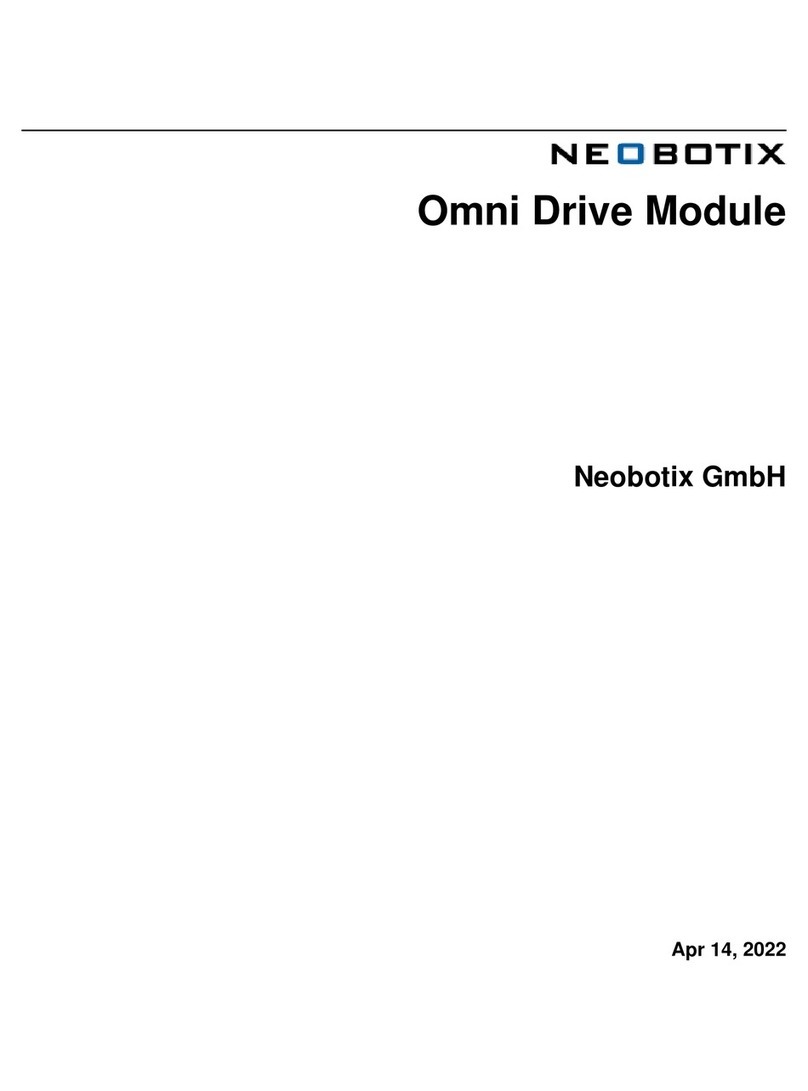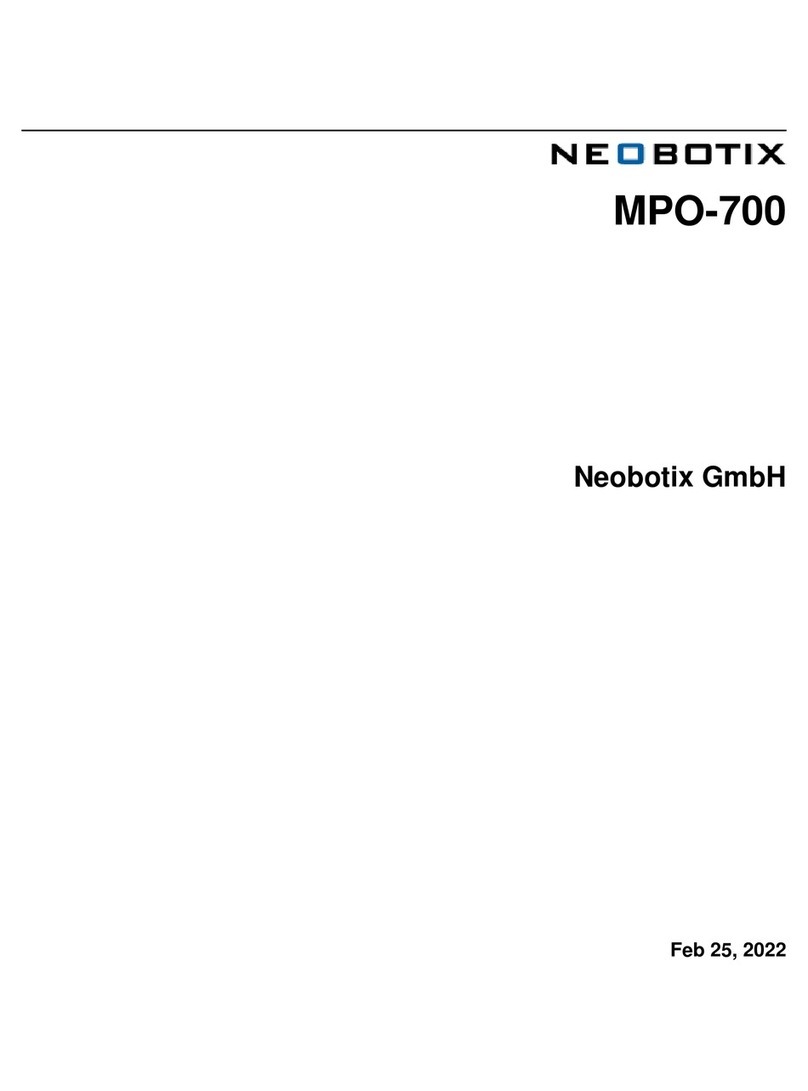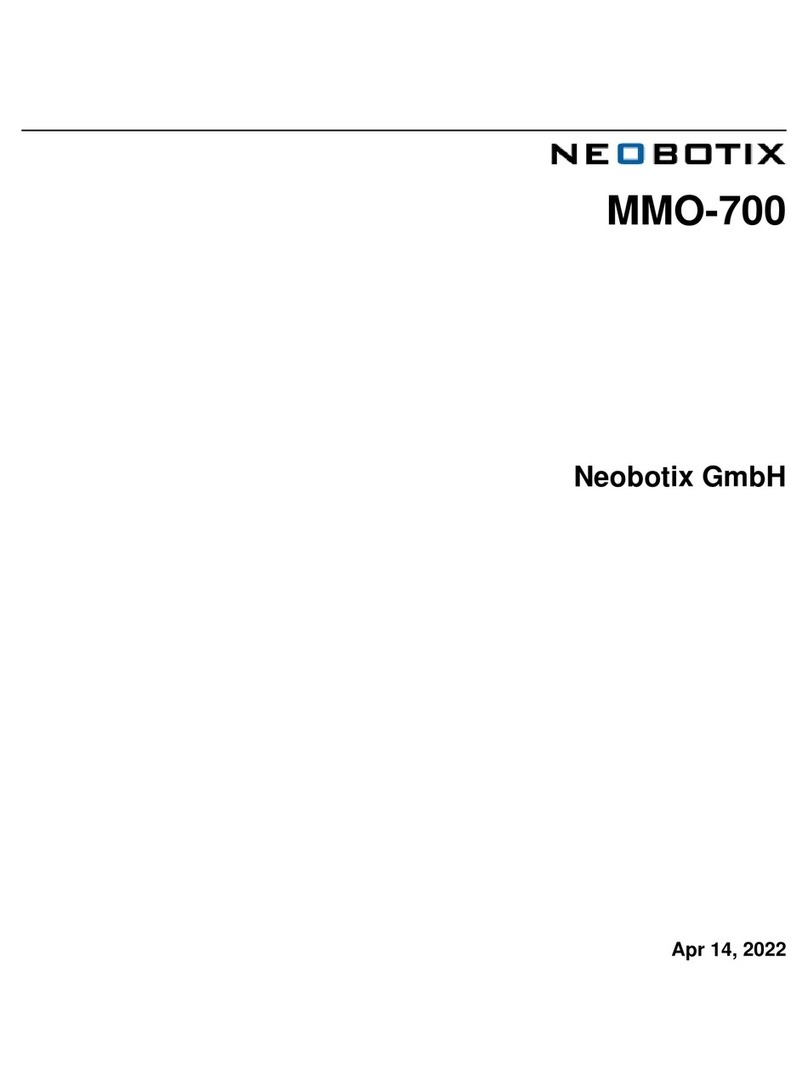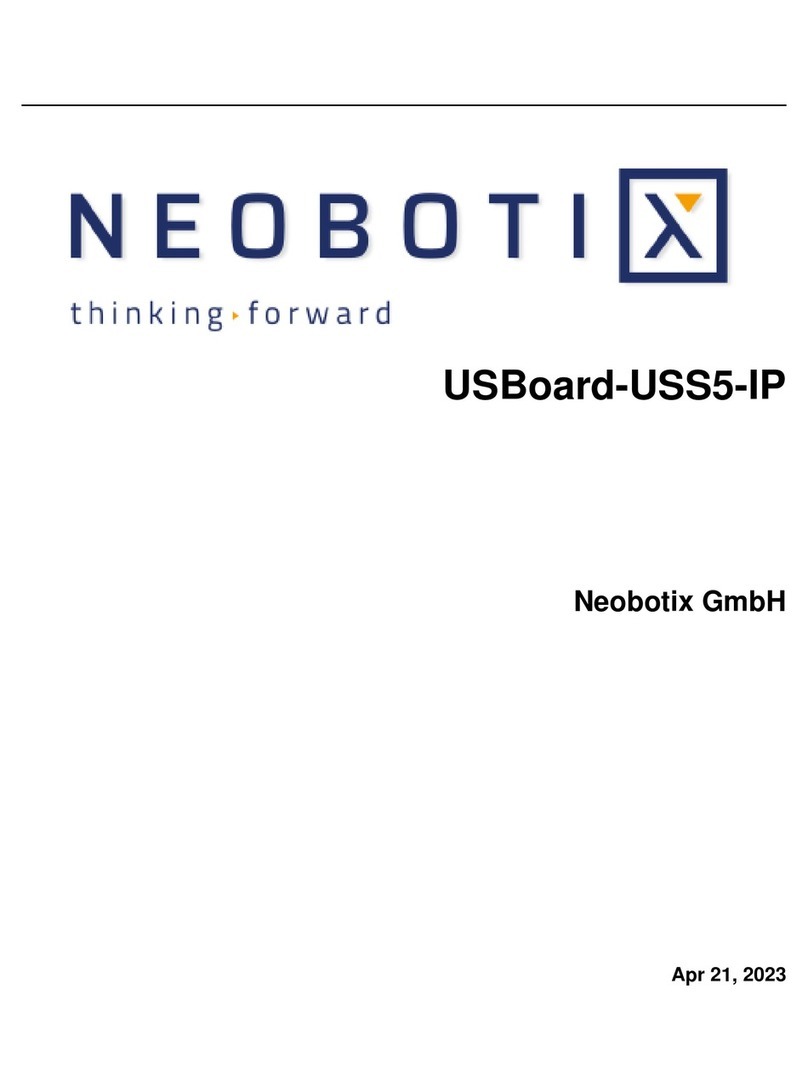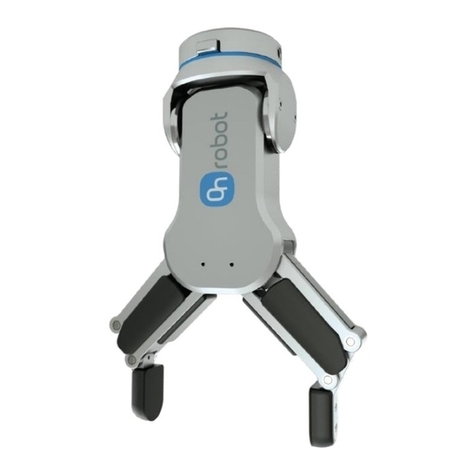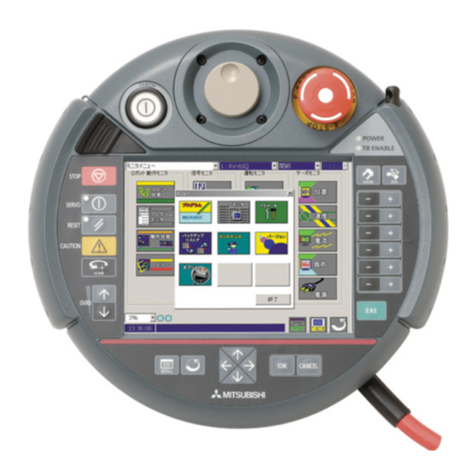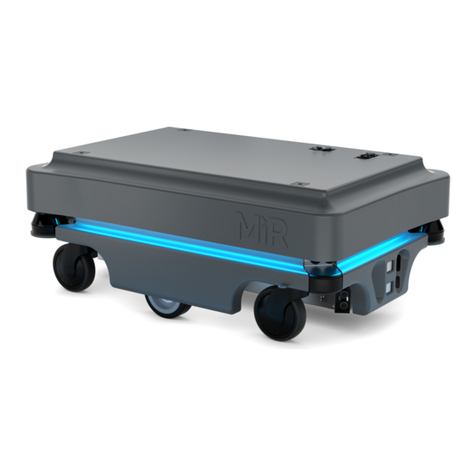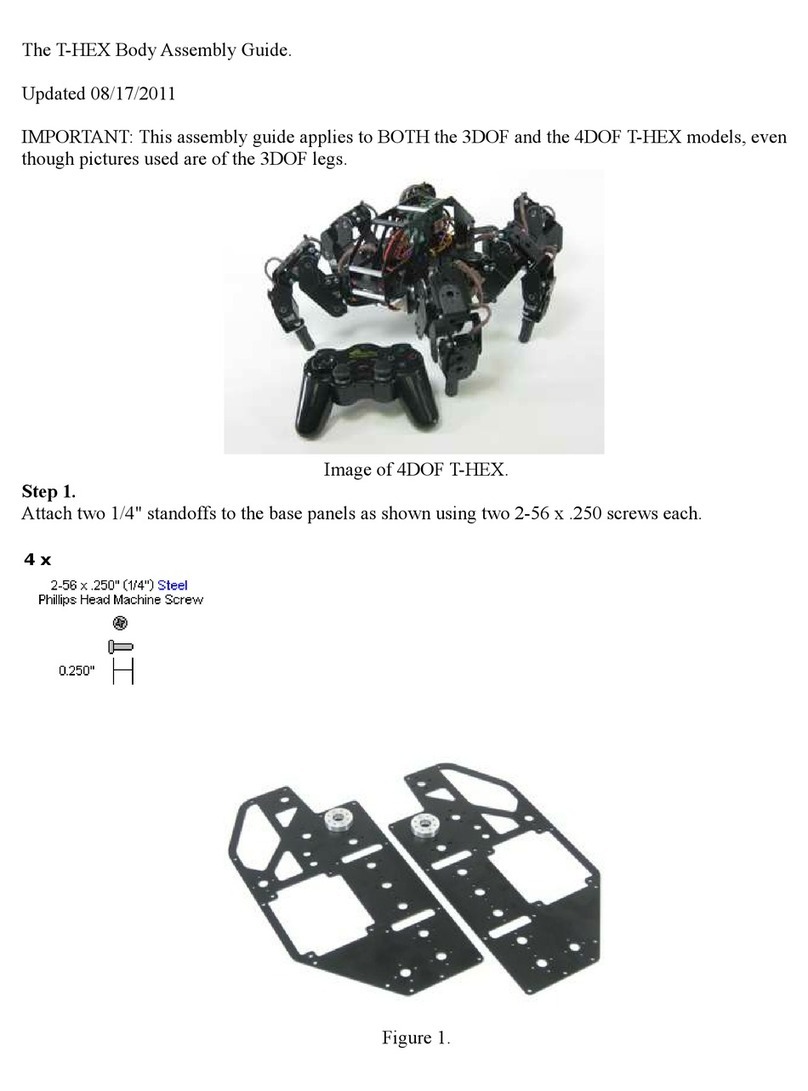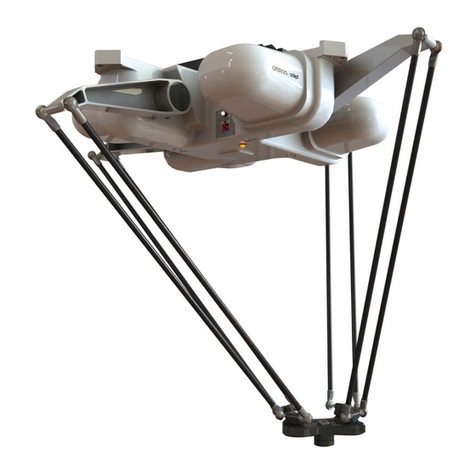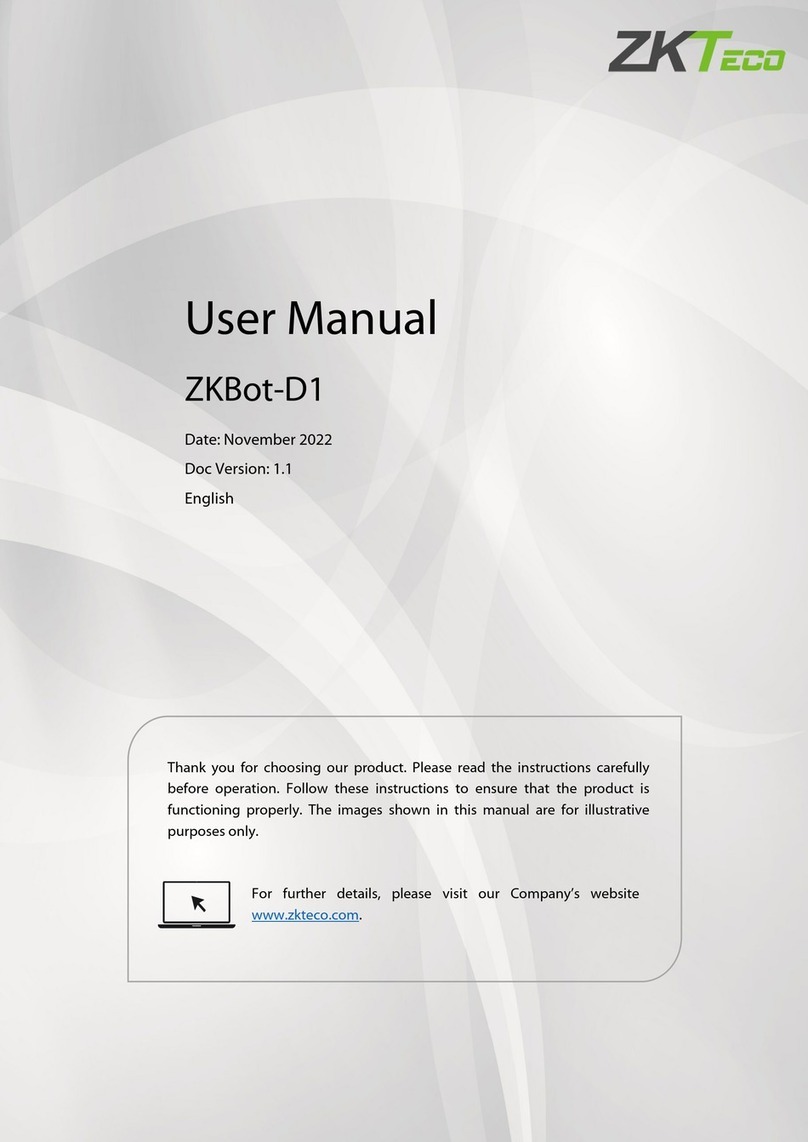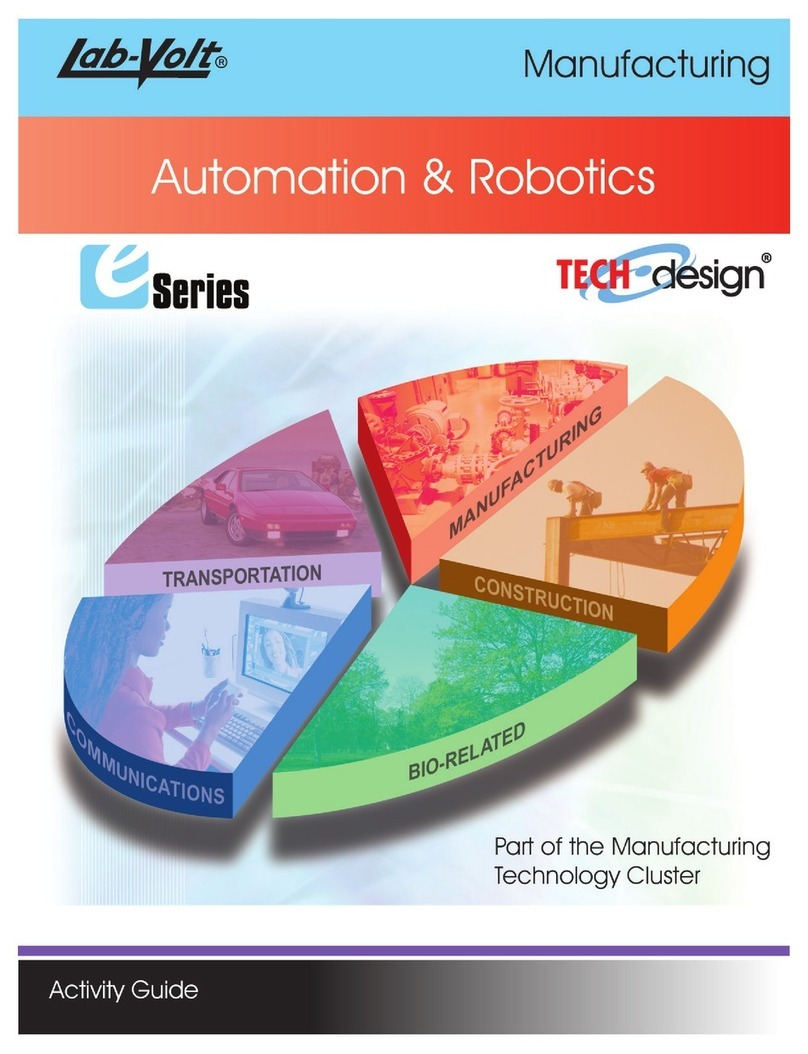neobotix MPO-500 User manual

MPO-500
Neobotix GmbH
Feb 25, 2022

Contents:
1 MPO-500 1
1.1 Product Information ........................................... 2
1.1.1 Intended Use .......................................... 2
1.1.2 Improper Use .......................................... 2
1.1.3 Working Area .......................................... 2
1.1.4 Qualified Personnel ....................................... 3
1.1.5 Safety Instructions ....................................... 3
1.2 Operating Elements ........................................... 4
1.2.1 Emergency Stop Buttons .................................... 4
1.2.2 Key Switch ........................................... 5
1.2.3 Brake Release Button ...................................... 5
1.2.4 Charging Socket ........................................ 5
1.2.5 LC-Display ........................................... 5
1.2.6 Access to the On-Board Computer ............................... 5
1.3 Mechanical Properties .......................................... 5
1.3.1 Dimensions ........................................... 5
1.3.2 Absolute Maximum Ratings .................................. 6
1.3.3 Positions of Sensors ....................................... 6
1.3.4 Electrical Properties and Miscellaneous Data ......................... 6
1.4 Transport ................................................. 8
1.4.1 Packaging ............................................ 8
1.4.2 Unpacking the Robot ...................................... 9
1.4.3 Short Distance Transport .................................... 9
1.4.4 Long Distance Transport .................................... 9
1.5 Maintenance ............................................... 9
1.5.1 Software ............................................. 9
1.5.2 Cleaning ............................................. 10
1.5.3 Batteries ............................................. 10
1.5.4 Battery Replacement (Quick Change) ............................. 10
1.5.5 Fuses .............................................. 11
1.6 Taking out of Service ........................................... 11
1.7 Legal Notes ................................................ 11
1.7.1 EU Declaration of Conformity ................................. 11
1.7.2 RoHS Information ....................................... 12
2 General Hardware Information 13
i

2.1 Key Switch ................................................ 13
2.1.1 Turning on ........................................... 13
2.1.2 Emergency Reset ........................................ 13
2.1.3 Shut down ............................................ 13
2.1.4 Switch off ............................................ 13
2.2 LC Display ................................................ 14
2.2.1 Main View ........................................... 14
2.2.2 The Info View .......................................... 15
2.3 Batteries ................................................. 16
2.3.1 Battery Types .......................................... 16
2.3.2 Charging ............................................ 17
2.3.3 Recycling ............................................ 18
2.4 Charging Stations ............................................ 18
2.4.1 Automatic Charging Station .................................. 18
2.4.2 External Battery Charging Station ............................... 20
2.5 Connectors ................................................ 22
2.5.1 TE Connectivity - HE14 .................................... 22
2.5.2 Würth Elektronik - MPC4 ................................... 22
2.5.3 Würth Elektronik - MPC3 ................................... 23
2.6 Safety Instructions ............................................ 24
2.6.1 General Safety Instructions ................................... 24
2.6.2 Briefing ............................................. 25
2.6.3 Safety System .......................................... 25
2.6.4 Cooperating with the Robot ................................... 26
2.6.5 Bringing into Service ...................................... 27
2.6.6 Modification of the System ................................... 27
2.6.7 Expected Misuse ........................................ 27
2.6.8 Configuring the Safety Fields .................................. 28
2.7 Safety Instructions (Manipulators) .................................... 29
2.7.1 Robot Arms ........................................... 29
2.7.2 Laser Scanners ......................................... 29
2.7.3 Working required from the Customer .............................. 29
2.8 Maintenance ............................................... 30
2.8.1 Cleaning ............................................. 30
2.8.2 Maintenance and Repairs .................................... 30
2.9 Qualified Personnel ........................................... 31
2.10 Taking out of Service ........................................... 32
2.10.1 Disassembly ........................................... 32
2.10.2 Recycling ............................................ 32
2.10.3 Mechanical parts ........................................ 32
2.10.4 Electrical components ..................................... 32
2.10.5 Batteries ............................................. 33
2.11 Legal Notes ................................................ 33
2.11.1 Version Information ....................................... 33
2.11.2 Liability ............................................. 33
2.11.3 Downloads and Further Information .............................. 33
ii

CHAPTER 1
MPO-500
_
Download as PDF1
The mobile robot MPO-500 features four Mecanum wheels which provide an extraordinary manoeuvrability. Each
Mecanum wheel has several independent rollers mounted along its circumference. The axles of the rollers are rotated
at 45° to the wheel’s main axle. This design enables the robot to instantly move into any direction: The Mecanum
wheels make it truly omnidirectional.
This kinematics offers a number of interesting advantages over other systems like Omni wheels or the Omni Drive
Modules of the MPO-700:
• Mecanum wheels have proven themselves worldwide since 1973,
• they require only a very simple and robust drive system,
• they allow instantaneous motion without alignment and
• the required control software is very simple.
1https://neobotix-docs.de/hardware/en/MPO-500.pdf
1

CHAPTER 1. MPO-500 1.1. PRODUCT INFORMATION
These extraordinary features have made Mecanum wheels a very popular solution especially in robotics research.
1.1 Product Information
1.1.1 Intended Use
The MPO-500 has been designed for use in service robotics research. It can be used for a wide range of different
experiments and tests in fields such as autonomous vehicles, mobile manipulation and factory automation.
Depending on the intended application the MPO-500 can be used on its own, in combination with other robot vehicles
and in combination with stationary systems. Furthermore, application specific extensions can be integrated into the
basic platform. These might be a customised cargo area, a robot arm or special sensors.
The MPO-500 may only be used in laboratories, test halls or similar environments. It is not recommended to use the
MPO-500 in any other surrounding, especially not outdoors, in offices or factories.
1.1.2 Improper Use
Danger:
• The mobile robot must not be used for transportation of passengers in any way. No person must ride on the
robot itself, nor must the robot be used to move any other vehicle or hanger with passengers aboard.
• The mobile robot must not be operated in any publicly accessible area without assessment of risks. If the
robot is to be modified either permanently (e.g. by mounting additional components) or temporarily (e.g. by
loading cargo) its safe operation must be assessed and approved.
• Without the safety approval described above, the mobile robot must at no times be used without supervision
of a qualified operator if there are guests, passers-by or other people unfamiliar with the robot within the
working area.
• The robot must never be operated in areas where there are staircases leading down, elevated platforms or
other possibilities for falling or dropping down. This may cause serious injuries or death!
1.1.3 Working Area
The working area of the mobile robot must be protected against rain and have a sufficiently firm and clean floor. The
floor must be even and horizontal.
Tip: Slopes, edges, steps and unevenness can result in problems when the robot is moving or with the localisation.
Under some circumstances the robot might not be able to continuously determine its exact position and therefore might
plan unnecessary or problematic paths or might even be unable to reach its destination.
Under certain conditions, rain or heavy splash water might enter the robot and cause damages. Flying sparks, heavy
dust and similar dirt may affect or damage the sensors and thus might make the operation of the mobile robot inefficient
or unsafe. Dirt and liquids on the floor may lead to slippage and problems of localisation and navigation.
The robot does not feature any sensor for detecting staircases, holes or other areas where it may drop down. In case of
loss of localisation or faulty programming the robot might fall down such place
2

CHAPTER 1. MPO-500 1.1. PRODUCT INFORMATION
Warning: Always check for and secure all places where the robot might drop down before bringing it into
operation.
1.1.4 Qualified Personnel
This product must only be modified, commissioned, operated and serviced by qualified personnel.
The requirements on qualified personnel can be found at Qualified Personnel (page 31).
1.1.5 Safety Instructions
Please also check the general safety instructions for Neobotix robots which can be found at Safety Instructions
(page 24).
1.1.5.1 Danger Areas
Wheels
Due to their unique design, the four Mecanum wheels of the MPO-500 have a higher potential for danger than normal
wheels. Please mind the following in order to prevent injuries or damages:
• Never touch the wheels of the moving robot and also prevent guests, passers-by and especially children from
touching them.
• Take care that no part of the cargo or additional components (e.g. cables, wires) can touch the wheels.
• Make sure that the working space of the MPO-500 is free of all objects which might be caught in the wheels.
Different from normal wheels Mecanum wheels may not only run over objects but objects might also get stuck
in the wheels and might be moved along.
• In case additional safety measures are required please contact Neobotix. We will provide wheel housings de-
signed for your application.
Battery Drawer
Both the outsides of the robot and the battery drawer are completely safe to touch while the robot is in use. Neverthe-
less, opening the battery drawer allows one to reach into the robot platform and to touch powered components.
Warning: Never reach into the robot platform while the system is turned on. There is risk of electric shock!
All cables and wires on the batteries and inside the drawer are placed and cut to length in a way that will prevent
damages during normal operation. Modifying or moving these parts might cause damage to the wires.
Warning: Always take great care that no cables are clamped between drawer and platform or get caught in the
telescopic slides. Please contact Neobotix immediately when noticing any damages to the cables.
A robot with damaged battery cables must not be operated in any case!
3

CHAPTER 1. MPO-500 1.2. OPERATING ELEMENTS
Laser Scanner Positions
The height of the scanning plane of the laser scanners must be chosen according to the applications safety require-
ments. In case the robot is to operate fully autonomously and without supervision in an area where it might encounter
unconscious people the scanning plane should be no more than 200 mm above the ground.
Each laser scanner has a 270° wide field of view which is symmetric to the scanner housing. Therefore the positions
of the laser scanners must also be chosen in consideration of blind spots.
Please contact Neobotix if the positions of the laser scanners has to be modified.
1.2 Operating Elements
The figure below shows the tail of the MPO-500 and the most important operating elements.
Fig. 1: Operating elements of the MPO-500
1 Emergency stop buttons
2 Brake release button
3 Key switch
4 HDMI socket
5 Wireless joystick receiver
6 Charging socket
7 Connector for 2nd scannerr
8 Ethernet socket
9 USB socket
10 LC-Display
1.2.1 Emergency Stop Buttons
When one of these buttons is pressed the robot is immediately set to emergency stop. All drives are disconnected from
power supply and the fail-safe brakes are engaged. This state can be reset by unlocking the emergency stop buttons
4

CHAPTER 1. MPO-500 1.3. MECHANICAL PROPERTIES
and turning the Key Switch (page 13) clockwise to position II for a few seconds.
1.2.2 Key Switch
See Key Switch (page 13).
1.2.3 Brake Release Button
Pressing this button will open the motors’ brakes allowing the robot to be moved even while it is turned off.
1.2.4 Charging Socket
The battery charger can be manually connected to this socket. Further information can be found at Charging (page 17).
1.2.5 LC-Display
This display shows the most important status information.
A detailed description of the LCD can be found in LC Display (page 14).
1.2.6 Access to the On-Board Computer
An HDMI socket, a USB socket and an Ethernet port can be used to work on the computer and to prepare the robot
for the next application.
1.3 Mechanical Properties
1.3.1 Dimensions
Description Symbol Value (mm)
Wheel diameter D 254
Ground clearance G 45
Height of the mounting plane H1 386
Height of the scanner cover H2 409
Overall length of platform L1 988
Length of inner aluminium profiles L2 680
Length of outer aluminium profiles L3 380
Distance from platform centre to wheel axes L4 250
Maximum length to platform centre L5 494
Width of top plate W1 500
Distance from platform centre to outer aluminium profiles W2 219
Distance from platform centre to inner aluminium profiles W3 73
Track width W4 548
Maximum width W5 662
Size of aluminium profiles P 30
5

CHAPTER 1. MPO-500 1.3. MECHANICAL PROPERTIES
Fig. 2: Dimensions of the MPO-500
1.3.2 Absolute Maximum Ratings
Warning: Exceeding these ratings might cause malfunctions or damage the robot!
Description Units Value
Storage temperature °C -20 .. +50
Operating temperature (environmental temperature) °C +0 .. +35
Payload (equally distributed to aluminium profiles, default version) kg 80
Payload (equally distributed to aluminium profiles, high payload version) kg 250
Maximum speed m/s 0.9
Maximum bumpiness to pass over mm 5
Maximum acceleration m/s22.4
1.3.3 Positions of Sensors
All distances are in millimetres, measured relative to the platform’s coordinate system. All angles are in degrees,
measured counter-clockwise from the driving direction.
Sensor Symbol X-pos. Y-pos. Z-pos. a-angle b-angle
Front laser scanner LS1 442 0 372 0 0
Rear laser scanner LS2 -442 0 372 0 180
1.3.4 Electrical Properties and Miscellaneous Data
1.3.4.1 Properties of Internal Components
All data are taken from the respective data sheets.
6

CHAPTER 1. MPO-500 1.3. MECHANICAL PROPERTIES
Fig. 3: Coordinate system of MPO-500
Fig. 4: Positions of the laser scanners
7

CHAPTER 1. MPO-500 1.4. TRANSPORT
Description Units Value
Motor power W 300
Rated motor speed rpm 3000
Maximum motor speed rpm 5000
Possible motor speed (at battery voltage) rpm 1800
Rated motor torque Nm 0.95
Maximum motor torque Nm 1.91
Brake torque (static) Nm 1.47
Encoder resolution Increments/Revolution 10000
Gear ratio 1 25:1
Rated battery voltage V 24
Maximum unregulated voltage V 29
Battery capacity Ah 50
1.3.4.2 Metering Capacities of Sensors
All data are taken from the respective datasheets. Distances are measured in meters, angles are measured in degree.
Sensor Resolution Min.range Max. range Hor. angle Vert. angle
Laser scanner 0.5° 0 30 ±135 0
Ultrasonic sensors ~±0.01 m 0.25 1.5 ±60 ±30
1.3.4.3 Other Properties
Description Units Value
Weight kg 80
Expected working time a 10
1.3.4.4 Connectors
See chapter Connectors (page 22).
1.4 Transport
1.4.1 Packaging
The mobile robot MPO-500 is packed in a rugged wooden box which can be reused for future transports. If the original
box cannot be used anymore it is recommended to build a new box of similar design.
The base plate of the box has to be strong enough to carry the robot and to take asymmetric forces, e.g. when
moving the box with a forklift. When packing the robot it has to be secured against unintended slipping by sufficient
cushioning. In order to prevent dust and dirt from the cushioning material to enter the robot, the maintenance opening
should be closed and all connectors should be fastened or covered prior to packing the robot.
Tip: Depending on the cushioning material it might be advisable to protect the brake release button against unintended
activation. If this button is pressed during transport, the robot may move inside the box and the batteries might get
8

CHAPTER 1. MPO-500 1.5. MAINTENANCE
discharged. Furthermore, the key of the key switch should be removed and transported separately to avoid damages to
the key and the switch. Further information on the control elements can be found at Operating Elements (page 4).
1.4.2 Unpacking the Robot
If the robot is shipped in the original transport box only the lid should be removed. Then all small components and the
cushioning material can be taken out.
Once the robot is free of all cushioning it can be lifted out of the transport box. This should be done by at least two
people who can take hold at the bottom of the hull.
Warning: Never try to lift the robot by holding it at the exterior components mounted to the hull or at the
aluminium profiles on the top plate! Neither the exterior components nor any part of the platform’s top plate has
been designed for lifting forces and they may be damaged.
1.4.3 Short Distance Transport
For short distances the MPO-500 can also be transported in the trunk of a car without the wooden box. It still must be
secured against sliding and should not be driven outdoors.
1.4.4 Long Distance Transport
As long as the robot is packed properly there are no special requirements when shipping the MPO-500. Only in case
the robot has been exposed to very low temperatures (below -10°C) it should be left to reach room temperature again
before turning it on. This will prevent damages to the electrical and electronic components.
If the brake release button was covered and the key switch was removed there is no risk of the robot being turned on
during the transport or the batteries being discharged.
Tip: To eliminate every risk when shipping the robot it is recommended to disconnect all the batteries and to ship
them outside the robot. This will prevent short-circuiting and other damages. The batteries are leak proof and approved
for airfreight.
1.5 Maintenance
Information on hardware maintenance, cleaning and general precautions when working on the mobile robot can be
found in Maintenance (page 30).
The robot’s hardware is almost maintenance-free and the platform is not intended to be opened unless when used for
research. Please contact Neobotix before disassembling the robot!
1.5.1 Software
Apart from research or maintenance it will not be necessary to connect mouse or keyboard because the robot can be
controlled via wireless LAN and the graphical user interface. Even most software updates can be performed by remote
access.
9

CHAPTER 1. MPO-500 1.5. MAINTENANCE
In order to access the platform’s on-board computer directly, an HDMI, a USB and an Ethernet socket are available at
the rear side of the platform.
Please refer to chapter Operating Elements (page 4) for further information.
1.5.2 Cleaning
To achieve a long life of the platform and guarantee a satisfying operation, the platform should be checked and cleaned
regularly. Information on how to clean the robot and its sensors can be found in Maintenance (page 30).
Warning: The robot is only splash-water proof if the battery drawer is closed and locked, the charging socket
is sealed by its cap, all computer access sockets are covered and the cables of both laser scanners are connected
properly. Do not wet the robot while one of these components is not assembled correctly!
1.5.3 Batteries
Further information on the available battery type, as well as on battery maintenance and recycling, can be found at
Batteries (page 16).
In case you want to replace the batteries yourself please follow these steps:
1. Switch off the robot.
2. Switch off and disconnect the battery charger.
3. Remove all additional modules from the robot’s top plate.
4. Remove the screws holding the top plate (seven screws by default).
5. Carefully lift up the top plate and disconnect any remaining cables.
6. Remove the top plate.
7. Disconnect the connectors of both batteries.
8. Remove the cushioning from in between the batteries.
9. Slowly lift the batteries out of the platform and take care not to damage any cables.
10. Slowly place the new batteries into the platform while taking care not to damage any cables.
11. Connect both batteries to the robot.
12. Replace the cushioning and check if the batteries are locked in place.
13. Place the top plate back on the robot and reconnect its cables if necessary.
14. Align the top plate and arrange the foam rubber sealing properly to achieve best splash water protection.
15. Fasten the top plate to the platform and mount all modules removed earlier.
If you encounter any problems, please contact Neobotix immediately.
1.5.4 Battery Replacement (Quick Change)
The quick change system allows the batteries to be replaced without the use of tools. Please follow these steps:
1. Switch off the robot.
2. Switch off and disconnect the battery charger.
10

CHAPTER 1. MPO-500 1.6. TAKING OUT OF SERVICE
3. Unlock the battery drawer by turning the three black knobs counter-clockwise for 180°.
4. Slowly open the drawer.
5. Disconnect the batteries.
6. Lift the batteries out of the drawer.
7. Carefully place the replacement battery with the long cable into the drawer and push it fully inside.
8. Place the battery with the short cable into the drawer while taking care not to damage any cables.
9. Connect both batteries to the connectors inside the drawer.
10. Slowly close the drawer while taking care not to damage the cables.
11. Turn all three knobs clockwise for 180° to lock the drawer.
1.5.5 Fuses
The mobile robot features the following fuses:
ID Circuit Position Type Rated Cur-
rent
Character-
istics
F1 Main Battery
Power
Inside Battery Drawer / Next to Charg-
ing Socket
ATO blade
fuse
20 A default
F1’ 24 V Terminals RelayBoard Micro 5x20 5 A slow
F3’ Emergency Stop
Buttons
RelayBoard Micro 5x20 2 A fast
F4’ Brake Release But-
ton
RelayBoard Micro 5x20 3A slow
1.6 Taking out of Service
You can find information about taking out of service and about recycling here (page 32).
1.7 Legal Notes
The general legal notes can be found at Legal Notes (page 33).
1.7.1 EU Declaration of Conformity
This product fulfils all relevant directives of the European Union.
11

CHAPTER 1. MPO-500 1.7. LEGAL NOTES
1.7.2 RoHS Information
As non-road mobile machinery our mobile robots are explicitly exempted from the scope of the RoHS directive
2011/65/EU. We have nevertheless followed the underlying principles of RoHS and tried to reduce the use of harmful
and dangerous substances in our products as much as possible.
12

CHAPTER 2
General Hardware Information
2.1 Key Switch
All Neobotix robots are equipped with a key switch to turn the robot on and off and to reset emergency stops. It can
only be operated as long as the key is inserted.
2.1.1 Turning on
To start the robot, turn the key clockwise (towards position II) until the LCD lights up and then release again.
2.1.2 Emergency Reset
After an emergency stop was issued and the emergency buttons have been reset, turn the key clockwise (towards
position II), hold for about one second and then release again. The message in the LCD display should change if the
robot can be moved again.
2.1.3 Shut down
Turn the key counter-clockwise (towards position I) for five seconds to initiate the shutdown which will happen within
30 seconds. In this time, the platform software (if running) terminates and shuts down the operating system.
In case the on-board computer is shut down remotely (via the GUI or remote access), the robot will turn off automati-
cally.
2.1.4 Switch off
To immediately turn off the robot without waiting for the on-board computer to shut down, turn the key switch counter-
clockwise (towards position I) and hold it until the LCD light switches off.
13

CHAPTER 2. GENERAL HARDWARE INFORMATION 2.2. LC DISPLAY
Note: With this method, the robot is shut down by cutting the power supply. This may damage the on-board
computer’s hard- and software.
2.2 LC Display
2.2.1 Main View
2.2.1.1 Messages
The first line can be used to print messages sent from ROS, PlatformPilot or any other high level control software. The
default message is “NEOBOTIX GmbH”.
2.2.1.2 Status
The second line indicates the robot’s current status.
PLEASE WAIT The control software is not yet connected to the robot’s main control board.
READY The control software is active and the robot is fully operational.
EMERGENCY STOP One of the emergency stop buttons has been pressed.
TURN KEY →Reset the safety system by turning the key switch clockwise for about one second.
SCANNER STOP An obstacle has been detected within the laser scanner’s safety field. As soon as the obstacle has
been removed, the safety system will be reset automatically. If a Flexi Soft safety controller is installed, all stops
are indicated with this message.
CHARGING The robot is currently charging its batteries.
SHUTDOWN IN XXs The robot will turn itself off in a few seconds.
BATTERY VOLTAGE LOW The battery voltage is critically low and the robot will soon shut down to prevent a
deep discharge. Further information can be found in the next section.
MOTOR ERROR At least one motor is reporting an error. This state is quit automatically as soon as all motors are
operational again.
SAFETY RELAY FAIL One of the safety relays is damaged. Please contact Neobotix.
POWER RELAY FAIL The power relays are damaged. Please contact Neobotix.
14

CHAPTER 2. GENERAL HARDWARE INFORMATION 2.2. LC DISPLAY
EMSTOP BUTTON FAIL One of the emergency stop buttons does not operate properly. Please contact Neobotix.
CHARGE RELAY FAIL The charging relay is damaged. Please contact Neobotix. The charging contacts might still
be connected to the batteries!
CHECKSUM ERROR The protocol versions of the control software and the RelayBoard do not match. Please check
the wiring and the log output of your software.
2.2.1.3 Battery Charge Level
B:096% The current charge level of the batteries. Due to the batteries characteristics the actual battery voltage may
be higher than the platform’s rated main voltage.
Nominal voltage Shut-down Working range Charging
24 V ≤22 V 23 V .. 25 V 25 V .. 29 V
48v ≤44 V 46 V .. 52 V 52 V .. 59 V
2.2.1.4 Temperature
T:20C This is the temperature (in °C) inside the platform, measured at the RelayBoard.
2.2.1.5 Uptime
00d:00h:02m:37s The bottom line shows the uptime since startup in days, hours, minutes and seconds.
2.2.2 The Info View
This view mode is not available in all robot types.
2.2.2.1 Version Information
The first line of this view shows the hardware version (HV) and the software version (SV) of the RelayBoard. For
software updates please contact Neobotix.
15

CHAPTER 2. GENERAL HARDWARE INFORMATION 2.3. BATTERIES
2.2.2.2 Serial Number
The second line shows the serial number (SN) of the RelayBoard.
2.2.2.3 Status Information
The third line indicates the current configuration of the software and the state of the hardware components.
The asterisk (*) indicates that the RelayBoard did not yet receive a valid configuration from the control software. After
configuration it will be replaced by a C.
The right part shows the state of all CAN bus devices. Motors are indicated by an M, the IOBoard by an I and the
USBoard by a U. Devices that are not installed are marked by a dash (-) and devices that failed to connect are marked
by an F.
2.3 Batteries
2.3.1 Battery Types
2.3.1.1 AGM Batteries
AGM batteries (Absorbent Glass Mat) are lead acid batteries that contain a fibreglass mesh between the battery plates.
This mesh contains the electrolyte and prevents leakages even if the batteries are stored upside down or when the outer
casing is cracked. This technology is well proven, cheap and widely available. Its drawbacks are a low energy density,
resulting in high weight for a given capacity, and a limited number of charge-discharge cycles.
Their capacity will reduce over time until at some point (approximately after two years of use) the robot’s available
uptime is no longer sufficient and the batteries need to be replaced.
There are several measures to prolong the life of AGM batteries and to save costs and resources:
• Recharge the robot whenever possible.
• Avoid deep discharge and reaching the automatic shut-down voltage.
• Charge the robot while it does not need to move, for example while programming for several hours.
• Do not leave the robot with empty batteries for a long time.
Lead batteries in AGM design are generally very tolerant and significantly less dangerous than traditional lithium-ion-
batteries. Heat, age or wrong treatment may nevertheless cause damages.
Attention: Regularly check the battery’s condition, at least once every month! The following points indicate
battery damages:
• Deformation or stretching of the battery’s casing
• White or brownish spots at the battery contacts or other metal parts
• Excess heat
• Strong smell of sulphur
• Liquid below the battery
As soon as you notice any kind of damage the batteries must no longer be used and must not be charged any
further! Please contact Neobotix immediately.
16

CHAPTER 2. GENERAL HARDWARE INFORMATION 2.3. BATTERIES
2.3.1.2 LiFePO4 Batteries
Lithium iron phosphate batteries, also known as LiFePO4 or LFP batteries, are a rather recent development in lithium-
ion battery technology. They provide several benefits compared to AGM batteries as well as other lithium-ion designs.
LiFePO4 batteries are not necessarily smaller than AGM batteries but save about 60% of weight at the same nominal
capacity. Under actual use conditions their usable capacity is even higher than that of AGM batteries, because they
can be fully discharged. Similar deep discharge of AGM batteries quickly leads to loss of capacity or other damages.
Thanks to their chemistry LiFePO4 batteries provide a very stable output voltage and support fast charging. This not
only reduces the recharge time significantly but also allows short periodic charging at convenient locations inside the
workspace. When done properly this in-process-charging enables the robot to operate 24/7 without being taken out of
operation for recharing.
LiFePO4 batteries are intrinsically much more stable than other lithium based designs. In addition our LiFePO4
batteries also contain a sophisticated battery management system (BMS) that constantly monitors their condition and
health. The status information of the BMS is read by the robot’s control software and used to indicate potential
problems.
Warning: If you notice anything unusal about the LiFePO4 batteries immediately switch off the robot, stop
charging and contact Neobotix!
2.3.2 Charging
2.3.2.1 With external Battery Charger
The battery of the mobile robot consists of several batteries connected in series and / or in parallel. The resulting
battery pack can be charged conveniently and safely by using the provided battery charger.
The battery charger needs a power supply of 230 VAC, 50 Hz.
The charger must be placed in a dry environment. Do not cover the housing, so appropriate cooling is possible, and
avoid direct sunlight.
First connect the battery charger to the charging connector and then turn on the charger. After the battery has been
fully charged first turn off the battery charger and then disconnect the cable.
Warning:
• Never connect or disconnect the battery charger while it is switched on! Increased wear of the contacts due
to electric arcs may occur. The battery or other electrical components may be damaged.
• Always make sure that the charging connector is fully inserted into the socket and properly secured. An
incomplete or insufficient connection can cause high heat and significant damages.
Recharging is done completely automatic after the connection is established and the battery charger is connected to
the main power supply and switched on. For recharging it does not matter whether the robot is switched on or off.
The only difference is the time needed for a full recharge. With the on-board electronic active, a recharge might take
significantly longer, depending on the workload of the on-board computer.
The battery charger features an overload protection, thus allowing the robot to be permanently (e.g. overnight) con-
nected to the charger. If the robot remains switched on while being connected to the charger (e. g. while programming)
it might be necessary to switch the battery charger off and on once a day.
Please also read the documentation that was supplied together with the battery charger.
17
This manual suits for next models
3
Table of contents
Other neobotix Robotics manuals
Popular Robotics manuals by other brands
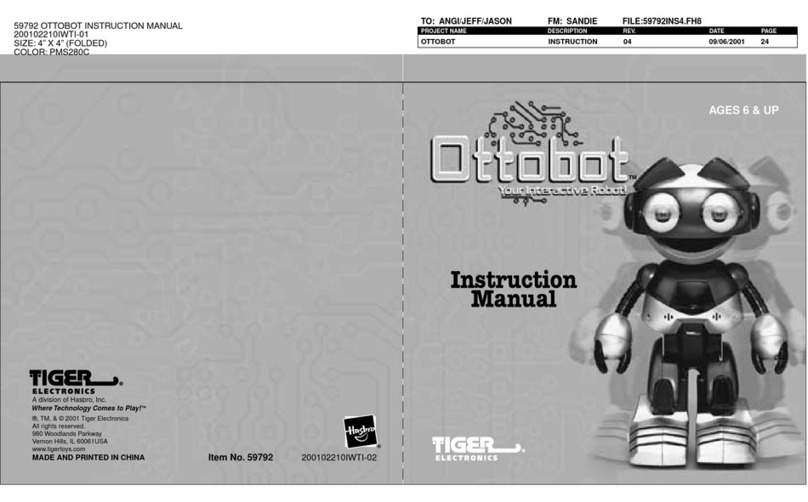
Tiger Electronics
Tiger Electronics OttoBot PMS280C instruction manual
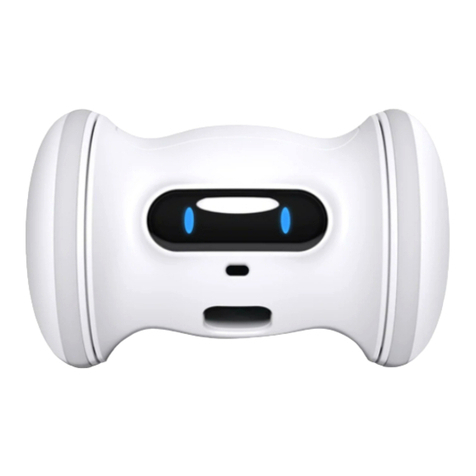
VARRAM
VARRAM Pet Fitness quick start guide
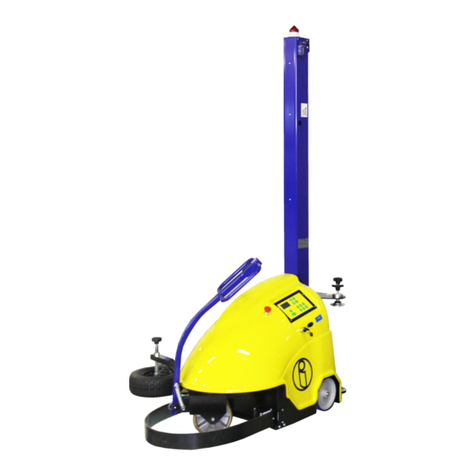
ItaldibiPack
ItaldibiPack LEONARDO SP instruction manual

OKM
OKM AH6 Maintenance manual

QUICK INTELLIGENT EQUIPMENT
QUICK INTELLIGENT EQUIPMENT ET8383 instruction manual
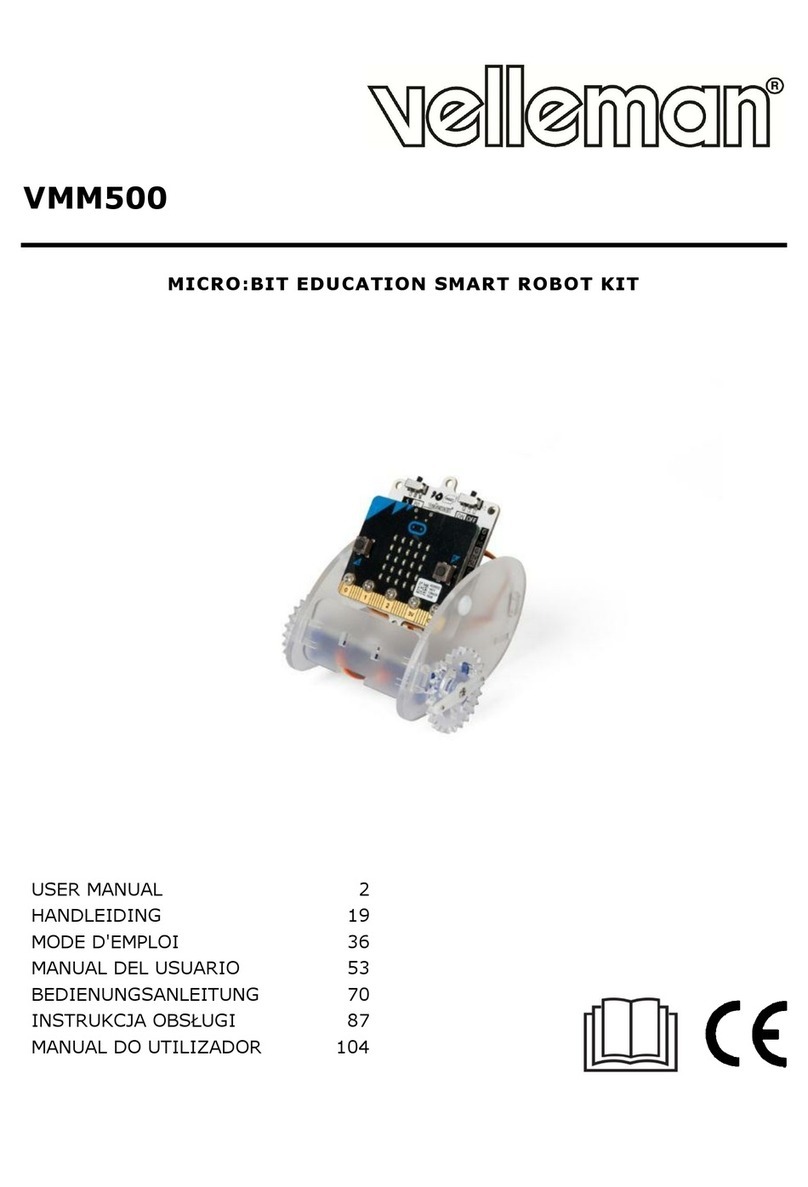
Velleman
Velleman VMM500 user manual
